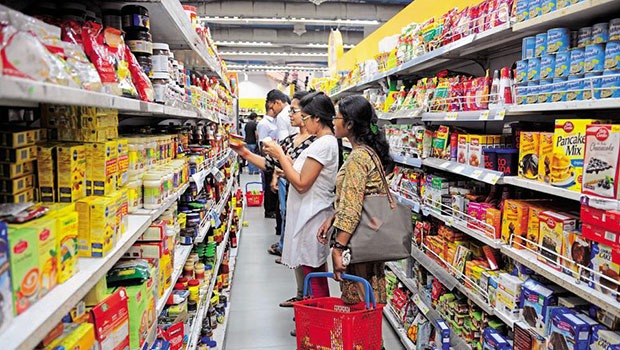Brands, including those in the fashion and FMCG businesses, as well as others, are presently seeking to attract consumers, particularly women in Tier 2 and Tier III cities, as cell phones have become increasingly widespread throughout India. The brands are taking these actions to increase their customer base and get the lion’s share of a mostly unexplored market.
According to a Boston Consulting Group- BCG analysis, the number of consumers who are influenced by technology and the number of people who shop online have both more than doubled in recent years, reaching 260–280 million and 210–230 million, respectively, in 2021.
The report also said that Indian women are quickly growing their presence in the online marketplace, in which they currently make up about 43% of the country’s new shoppers since the pandemic. Brand Consultant and Managing Partner of Bright Angles Consulting, Nisha Sampath, claims that women are now more visible in Tier 2 and Tier 3 cities as a result of factors including increased internet use, travel, and rising wealth. However, compared to metro cities, access to these elements still lags, leaving a gap that marketers might now try to fill.
Marketers are developing creative strategies to target potential customers in these cities in order to do this. In addition to D2C firms, many FMCG brands are also aggressively targeting women in Tier 2 and Tier 3 cities, according to the co-founder and COO of Momspresso, Prashant Sinha. They are doing this through a platform called MyMoney, which focuses on word-of-mouth advertising.
On this platform, average individuals talk to other customers around the globe about a specific product. Female creators of video material for product promotion use social media sites including Instagram, Facebook, and Whatsapp. According to Sinha, this enables marketers to connect with women in Tier 2 and Tier 3 cities.
Group Chief Marketing Officer of InfoEdge Sumeet Singh says that the penetration of cellphones among women has grown year over year in non-metropolitan areas. According to her, the pandemic has made it easier for women to use the internet. Even stay-at-home moms are now utilising online platforms beyond just using WhatsApp and watching entertainment. The rate of product sales in Tier 2 and Tier 3 cities indicates a rise in the local trend of online shopping.
The BCG analysis also reveals that moderate and heavy online consumers are more likely to be females over 45, from smaller cities.
A KPMG poll of 2,376 respondents from Tier I, Tier II, and Tier III cities found a nearly 27% rise in the willingness of Tier II and III customers to use internet channels. 56% of Tier-II consumers, up from 29% before COVID, were interested in making an online purchase. After the pandemic, there was a noticeable increase in women’s internet behaviour. According to Sinha, buying immunity-related goods for kids and expanding purchases beyond Amazon on websites like Meesho and more have become more common.
Sinha adds that Momspresso receives a lot of requests from women living in non-metropolitan areas who are looking for yoga, fitness, and food recipes, which clearly demonstrates a change in customer behaviour.
One of the better instances, according to Singh, is a company called Jeevansathi, where both men and women can create profiles in search of a life companion. Over time, a shift in female consumption on the platform has been observed. A good number of women have started creating their accounts, perhaps as a result of more word-of-mouth marketing taking place.
Language can be a challenge for firms trying to advertise their goods in T2 and T3 locations, claims Singh. Therefore, leveraging local dialect in advertising and enlisting micro-influencers with a local following can increase engagement opportunities there.
According to brand consultant Abhimanyu Mishra from Brandfizz, women in tier 2 and 3 cities have always been in the thick of things when it comes to making a buying decision for the household. The internet penetration through mobile phones has given them access to more products or brands in a more organised and swifter way. The pandemic has led to an increase in the mobile screen time of these women, not only for entertainment but also to make serious buying decisions, which brands must take into consideration while marketing themselves.




